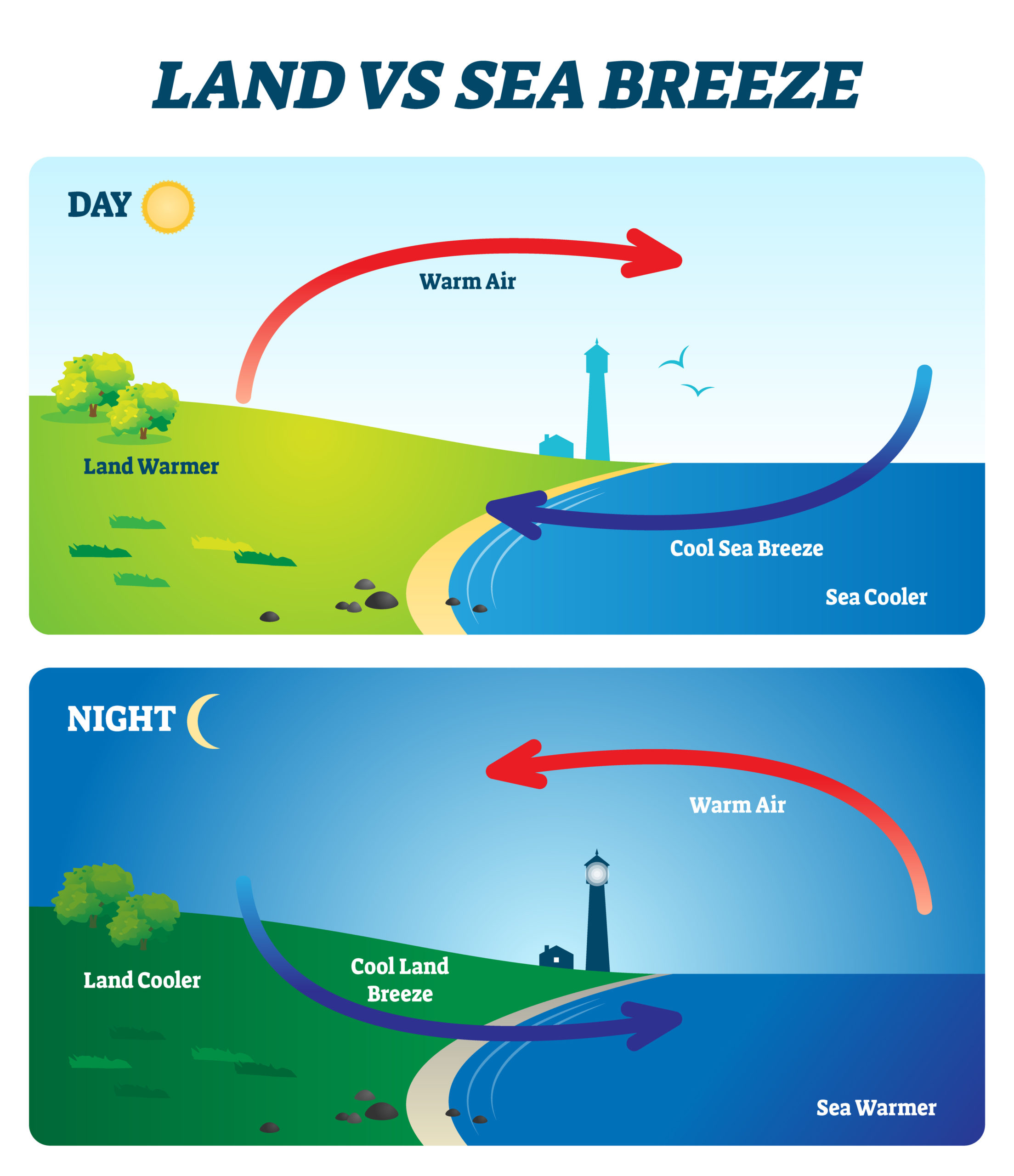


For example, merging of two Sea-Breezes originating from both sides of a peninsula enhances convection. The coastline shape can either enhance or inhibit sea-breeze development. ) in which the differential friction over land and over the sea is the main component for the development. In this respect the physical background differs for Coastal Convergence Sufficient temperature contrast between the land and sea surfaces is needed for the initiation of the Sea-Breeze. Later in the day, as solar radiation decreases, the Sea-Breeze dies out, the thermals weaken and the cumuliform clouds gradually disappear.įactors influencing the Sea-Breeze development Another factor influencing the wind direction along the coast is the regular existence of thermal lows over land in the afternoon. This is a result of the Coriolis force having an impact on the air current. If the large-scale flow is weak, the direction of the Sea-Breeze often veers with time. In the afternoon, when the boundary layer heating over land is at its maximum, the Sea-Breeze is normally at its most intense, and can penetrate tens of kilometres - in some cases, even over a hundred kilometres - inland. In these cases the use of satellite imagery is clearly problematic for the detection of Sea-Breezes, while it may still be detectable using other remote sensing means, such as sensitive weather radars. When the air is very dry, as often is the case in spring and early summer, the cumulus clouds may not appear at all. Cloud development frequently occurs in the ascending part of the circulation, while clouds tend to dissipate over the sea, where the air is sinking. The return current aloft carries the excess of air towards the sea. Both Sea-Breeze and return current (representing the air flowing from land to sea above Sea-Breeze) develop practically at the same.Sea-Breeze is initiated at low levels, or.There are other explanations for the initiation of Sea-Breeze: The mass divergence and resulting pressure fall over land and the convergence and pressure rise over the sea initiate the Sea-Breeze close to the surface

This flow is called a "return current", even though it may develop before the actual Sea-breeze. A classical explanation for the development of a Sea-Breeze is the "Upwards" Theory: The differential heating between land and sea leads to the development of a horizontal pressure gradient, which causes a flow from land towards sea. A Sea-Breeze normally starts in the morning, a few hours after sunrise, when the solar radiation heats the boundary layer over land.


 0 kommentar(er)
0 kommentar(er)
